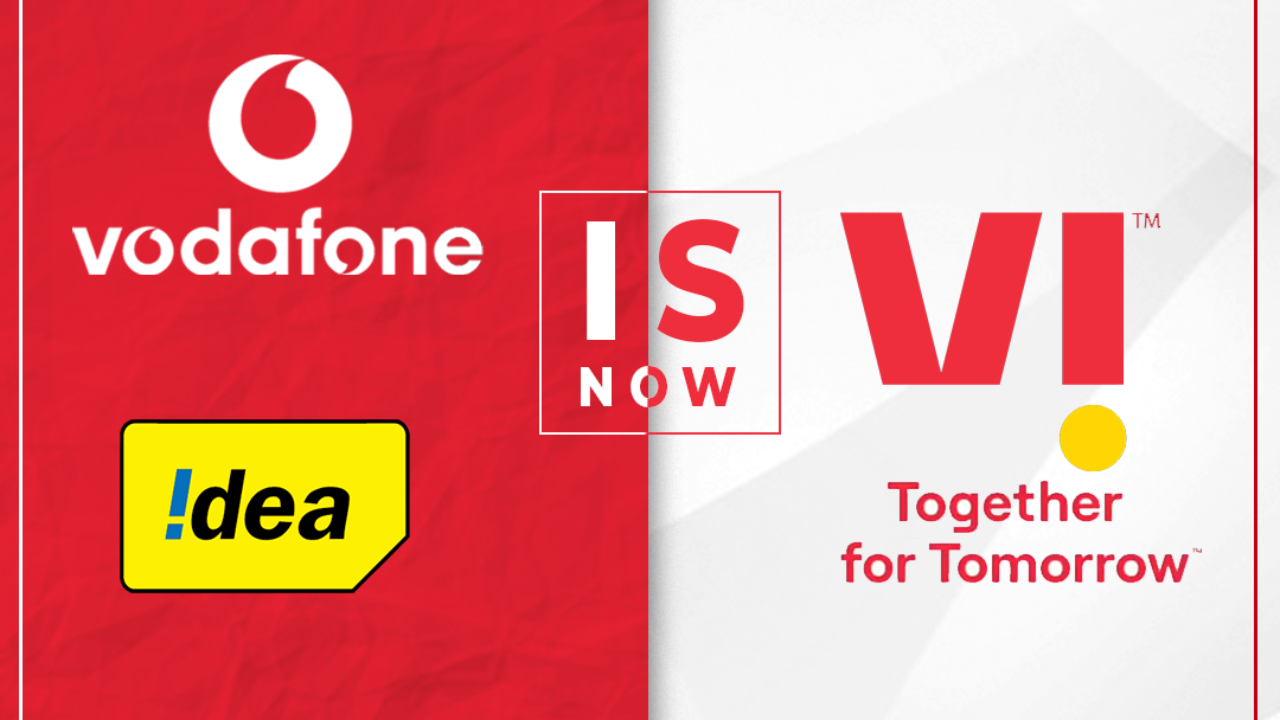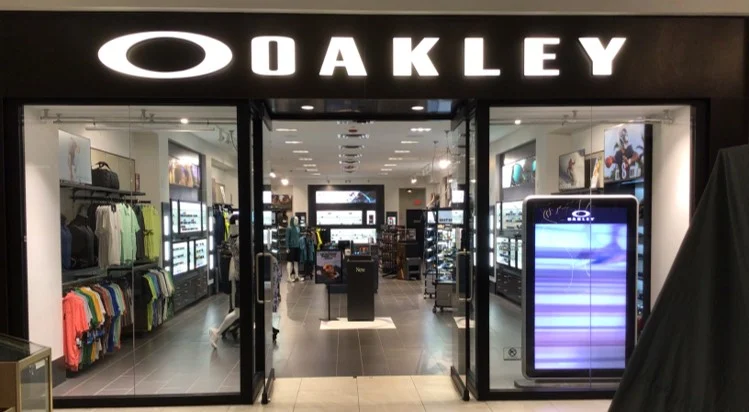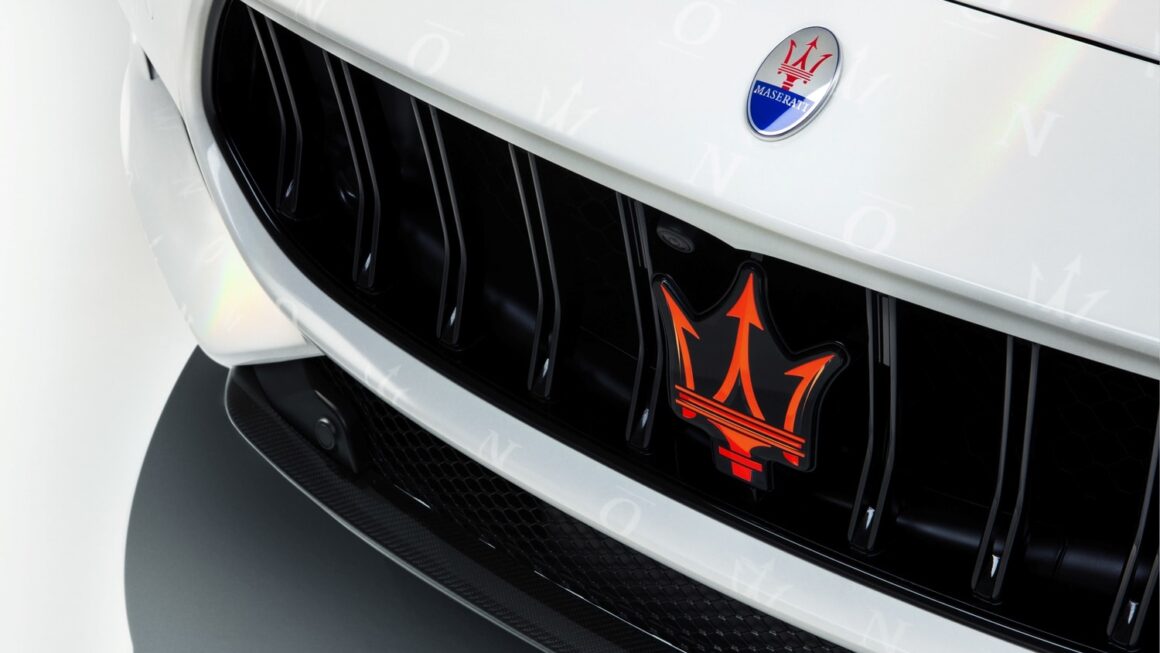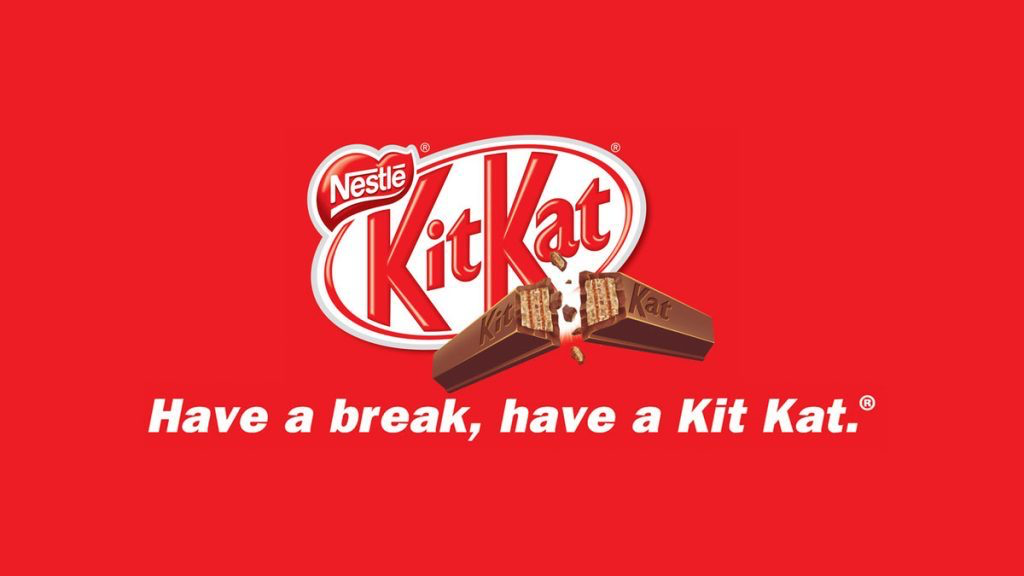Vodafone Group Plc (Vodafone), founded on 17 July 1984, is a telecommunications company. The organization works in two regional regions: Europe and Africa, the Middle East, and Asia-Pacific (AMAP). Its segments are Europe and AMAP. Its segment in Europe comprises regional areas such as Germany, Italy, the United Kingdom, Spain, and the rest of Europe.
Some European countries include the Netherlands, Portugal, Greece, Hungary, and Romania, among others. The AMAP section contains India, South Africa, Tanzania, Mozambique, Lesotho, Africa, Turkey, Australia, Egypt, Ghana, Kenya among others. The business offers a wide variety of offerings, including voice, texting, and data through mobile and fixed networks.
The business acquires spectrum and licenses for the use of radio frequencies to offer telecommunications communications. Its fixed capabilities include cable, fiber, and copper networks for the distribution of television, internet, and voice communications. The company’s Information Technology (IT) estate provides its data centers, client-relationship capabilities, customer billing systems, and web resources. Vodafone Global Enterprise (VGE) represents the international clients of the group.
The firm has a client base consisting of customers, domestic firms of all sizes, multinationals, and public sector agencies with a wide variety of communications needs. The Business reaches its clients through direct sales teams, indirect distributors, and telemarketing networks.
The Business provides its customers with a variety of mobile services that allow them to phone, email, access the Internet, download and stream music, and watch videos. It offers a variety of networking facilities, including email, video, cloud and hosting services, and the Internet of Things offerings. It offers these facilities through a network of nearly 300,000 base station locations.
Vodafone offers a variety of fixed networks in its markets, including voice, broadband, and tv services to users and a range of services to corporate clients, including cloud and hosting services and Internet Protocol-Virtual Private Network services (IP-VPN).
It is also involved in the business of carrier services. The M-Pesa Group, a money transfer provider, supports a network of approximately 261,000 agents in more than 10 countries. Its fourth-generation (4G) roaming network covers more than 90 countries. Its branches are Vodafone GmbH, Vodafone Limited, Vodafone Marketing UK, Quickcomm Pty Limited, Vodafone Espana, S.A.U., CWGNL S.A. And Vodafone Albania and Sh.A., among others.
Vodafone in India
Overview
Vodafone has partnered with the Essar Group as its principal joint venture partner for the Indian market. The Essar Group is a diversified business corporation with interests spanning the manufacturing and service sectors like Steel, Energy, communications, shipping & logistics, and construction.
.Vodafone Essar was launched in India on 21st September 2007. Vodafone was welcomed in India with the ‘Hutch is now Vodafone’ campaign. The popular and endearing brand Hutch was transitioned to Vodafone across India. This marked a significant chapter in the evolution of Vodafone as a dynamic and ever-growing brand. This brand unveiled nationally through a high-profile campaign covering all important media.
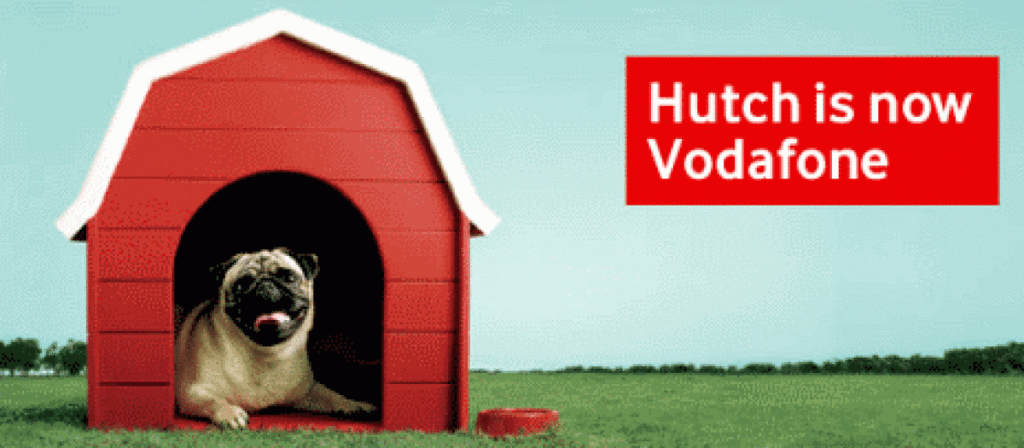
Vodafone, the world’s leading mobile telecommunication company, completed the acquisition of Hutchison Essar in May 2007 and the company was formally renamed Vodafone Essar in July 2007. The transition from Hutch to Vodafone is probably the largest brand change ever undertaken in this country and arguably as big as any in the world. It is even larger than Hutch’s own previous brand transitions.
The migration from Hutch to Vodafone was one of the fastest and most comprehensive brand transitions in the history of the Vodafone Group, with 400,000 multi-brand outlets, over 350 Vodafone stores, over 1,000 mini-stores, over 35 mobile stores, and over 3,000 touch-points rebranded in two months, with 60% completed within 48 hours of the launch.
Also Read: Reliance Jio – The History And The Historic Launch
Vodafone Idea Merger
The merger took place between two telecom giants. I.e. Vodafone India and Idea cellular on 20th March 2017 for $23 billion, which resulted in the creation of the biggest telecom company in India considering the number of subscriber base both the companies have. The combined entity had an enterprise value of $23.2 billion at that time.
The new entity has been controlled jointly and equitably by Vodafone and Idea. The merger resulted in the removal of Airtel from its apex position it enjoyed had for 15 years and aimed at creating a leader in terms of the number of customers in India. The merger allowed Vodafone India and Idea to get a strong position by cutting costs and effectively competing with Reliance Jio.
The deal highlights
The merger between Vodafone and Idea was approved by the NCLT Mumbai bench on 30th August 2018 which means the merger became effective from 31st August 2018. As per the scheme of the arrangement, Vodafone needed to combine its subsidiary in India i.e. Vodafone India (excluding its 42% stake in Indus tower) with Idea which is listed on the Indian stock exchange. The combined entity was worth more than $23 billion at that time.
The deal is said to be the merger of equals. The two companies agreed to merge their operation with a
swap ratio of 1:1 i.e. every one share held by a shareholder of Idea will be exchanged by one share of the merged company.
The deal had been structured in such a way that, on completion of this deal, Vodafone would end up getting a 45.1% stake in the combined entity, and Aditya Birla Group-owned by Kumar Mangalam Birla owned 26.0% stake in the merged entity after acquiring 4.9% from Vodafone for Rs 3875 crore, whereas, Idea’s other stakeholder will own the remaining 28.9% stake.
Further, the Birla group will have a right to acquire an additional 9.5% stake from Vodafone over the next 4 year from the date of the merger to comply with the condition of “merger of equals”,
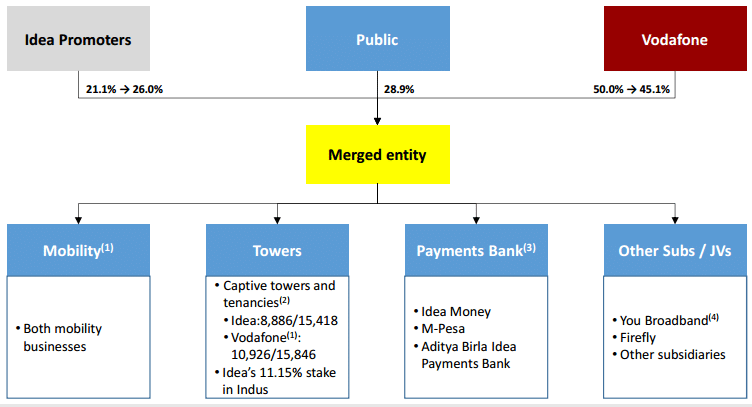
However, if equalization is not achieved due to the inability of Aditya Birla Group to acquire these extra 9.5% stake from Vodafone then Vodafone is obliged to sell these excess stakes in the share market. But till equalization is achieved, voting on excess stake held by Vodafone is restricted and is to be exercised jointly as per the agreement of the deal.
The merged entity, known as “Vodafone Idea Ltd” has 12 directors consisting of 6 independent
directors. Equal representation is being offered to both Aditya Birla Group and Vodafone, the
chairmanship being offered to Mr. Kumar Mangalam Birla.
The merger of Vodafone and Idea Cellular made it the world’s second-largest telecom company and India’s largest telecom company.
Vodafone is now ‘Vi’
The rebranding of Vodafone Idea – Vi – using just the initial of the two firms came two years after the merger of the telecommunications companies on 7 September 2020. According to the company, it represents the spirit of integration.
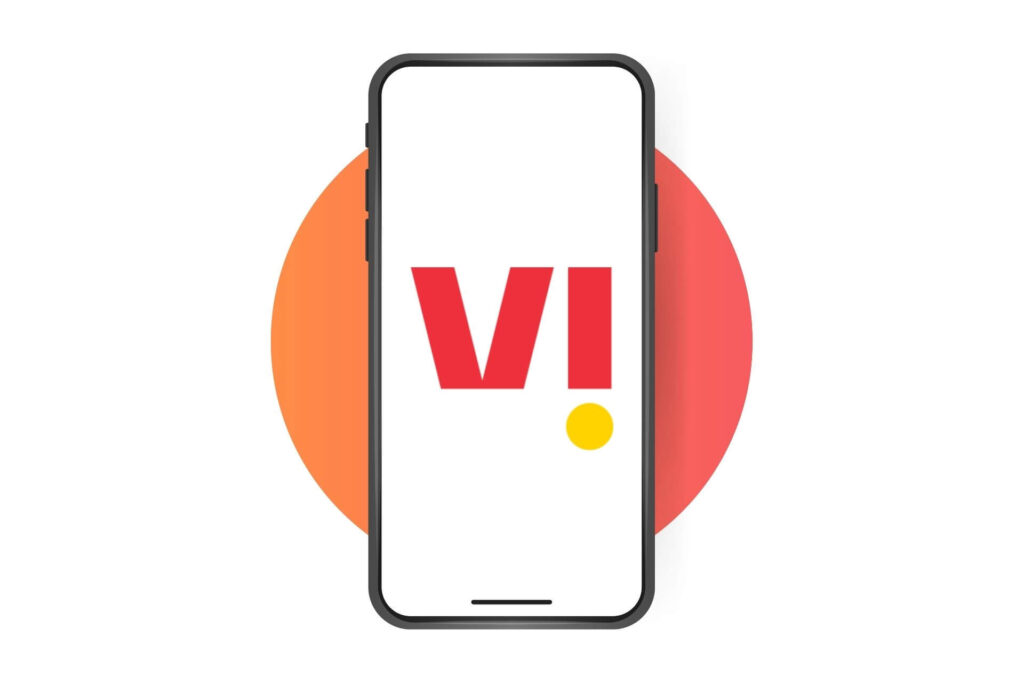
Vodafone Idea Ltd’s announcement said that Vi (read as We) is more than just the abbreviation of Vodafone and Idea. It is shorter, clearer, and though referring to the roots of the two labels, it also represents the mutual essence of Indian culture. “It’s not just about me, it’s about us in particular,” he said.
Vi is not just an identity, said the company in a statement on Monday. “The ‘I’ is punctuated by a bold mustard dot. It’s optimistic, surprising, and delightful. It represents India’s throbbing and revolutionary rhythm. It’s special, constantly unpacking exciting opportunities, and always keeping consumers at the center of everything,” she said.
The Vi ads are already on TV and digital platforms and the company is planning a high decibel intensive multi-media campaign.
In the case of Vi, such reactive rebranding was done to mark the final step towards the integration of the two brands, three years after the news of the merger was first announced. Vodafone India Ltd and Idea Cellular Ltd were two brands that came together to survive the disruptions in the telecom industry post the introduction of Jio.
To read more content like this, subscribe to our newsletter.
